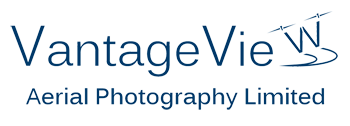FAQ
Frequently Asked QuestionsWhat does UAV mean?
UAV is an acronym for Unmanned Aerial Vehicle.
An Unmanned Aerial Vehicle, commonly known as a drone, is an aircraft without any human pilot, crew, or passengers on board.
The UAV is a component of an unmanned aircraft system, which includes the addition of a ground-based controller and a system of communications with the UAV.
What does RPAS mean?
RPAS is an acronym for “Remotely Piloted Aircraft System”.
An Remotely Piloted Aircraft System, is also commonly known as a drone, is an aircraft without any human pilot, crew, or passengers on board.
The RPAS consists of a remotely-piloted aircraft, the required command and control links and any other system elements as may be required, at any point during flight operation.
Can anyone fly a drone?
In Canada and the US anyone can operate a drone recreationally provided they adhere to Transport Canada and Federal Aviation Administration regulations.
To operate a drone commercially within Canada and the US, everyone must complete training approved by Transport Canada and the Federal Aviation Administration.
Additionally, commercial operation of a drone within Canada and the US requires both the operator and the equipment to be certified and registered.
What is Commercial Operations?
Canada has some of the strictest UAV laws in the world for Commercial UAV operations, which also govern Recreational UAV operations.
Examples of commercial operations include photography and videography, remote sensing, structural inspection, communication tower inspection and much more.
Commercial UAV operations include both basic and advanced operations, for which the rules are consistent for both commercial and recreational operations.
Regulatory Questions
What is Basic and Advanced Drone Operations?
Under the current regulations, there are two categories for drone operations: basic and advanced. These categories are largely determined by the distance between the drone operations and bystanders, as well as airspace rules.
If these three conditions are met, the drone operations are considered basic:
- The drone is more than 30 meters horizontally from bystanders
- The drone is never flown directly above bystanders
- The drone is flown only in uncontrolled airspace
If any one of these three conditions are not met, then the drone operations are considered advanced.
In addition to the general rules and regulations for flying a drone, pilots conducting advanced operations must:
- have a pilot certificate granted after successful completion of the advanced operations licensing test, which includes a flight review;
- carry their pilot certificate and proof of registration at all times, when flying;
- fly a drone that meets all regulation-required safety and assurance standards; and
- survey the flying area and maintain records of all obstacles, such as buildings and power lines, before flying
Do the regulations differ for Recreational and Commercial Operations?
Whether recreational or commercial, the following are the general regulations that apply to all UAV / RPAS Pilots:
- All drones between 250 g to 25 kg in weight must be registered by Transport Canada
- Pilots must bear a drone pilot certificate and mark their drones with the registration number
- The drone must be visible at all times and should never fly over 120 metres in the air
- The drone must be operated away from other aircraft
- Drone pilots must avoid flying near emergency sites and advertised events
- They must maintain a distance of at least 30 metres from bystanders
- They must respect everyone else’s right to privacy
Are there other regulations for drone operations?
If flying a drone outside of basic or advanced operations, such as operating a drone that weighs over 25 kilograms, operating at an altitude higher than 400 feet in the air, operating at a special event or operating beyond the visual line-of-sight, an application for a special flight operations certificate (SFOC) must be submitted to the Minister of Transport. Once granted, the drone operations must be limited only to the specific purpose for which it was intended.
Other considerations before engaging in commercial drone applications, there are many regulatory requirements that must be addressed in addition to the rules and regulations noted above. These requirements include maintaining up-to-date records, adhering to payload restrictions, complying with local by-laws, and following applicable privacy regulations. As many drones retain information or may interfere with the enjoyment of private property, it is important for drone users to consider how to comply with applicable privacy legislation and how to avoid committing privacy-related torts.
What are the penalties and consequences?
Operating drones outside the mandated rules and regulations could result in:
- up to a $5,000 fine for each violation of:
- flying a drone without a pilot certificate;
- flying an unregistered or unmarked drone; or
- flying in a controlled or restricted airspace (without an SFOC); and
- up to a $15,000 fine for flying a drone in a manner that may place other aircraft or people at risk.
Another consideration to keep in mind; as many drones retain information or may interfere with the enjoyment of private property, it is important for drone users to consider how to comply with applicable privacy legislation and how to avoid committing privacy-related torts.



